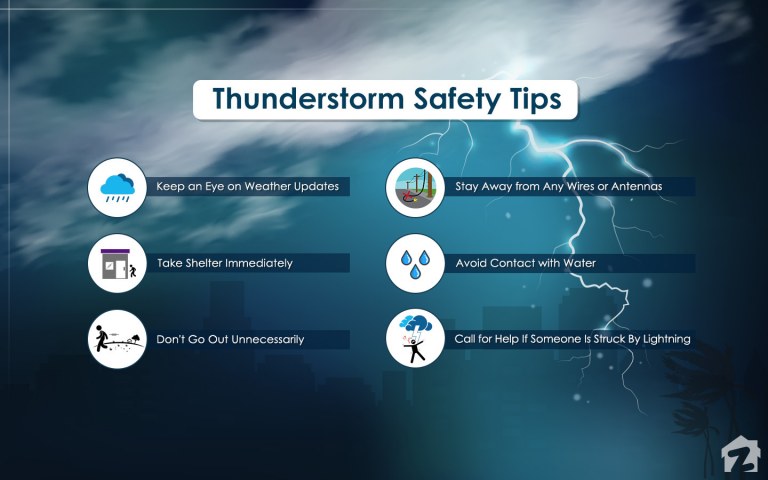Flood Warning: Stay Safe With NWS Safety Tips

Table of Contents
Understanding Flood Warnings and Watches
The first step in protecting yourself from flooding is understanding the difference between a flood watch and a flood warning. Both are issued by the NWS, but they signify different levels of risk:
-
Flood Watch: A flood watch means conditions are favorable for flooding. Heavy rainfall, snowmelt, or dam failure could lead to flooding in the near future. This is a time to review your flood preparedness plan and monitor the situation closely. Pay close attention to river levels and any river flood warnings that might be issued for your area.
-
Flood Warning: A flood warning indicates that flooding is occurring or is imminent. Immediate action is required. This is not the time to wait and see; you should be prepared to evacuate if necessary. A flash flood warning is a particularly urgent type of flood warning, signifying a sudden, rapid flood that is already happening. This requires immediate action to find safe, high ground.
Understanding the severity levels and the specific language used in NWS alerts is critical. The NWS uses a variety of terms to describe the potential for flooding, including flash flood warning, severe weather alerts, and indications of flood stage. Familiarize yourself with these terms so you know how to respond appropriately.
Preparing for a Flood
Proactive flood preparedness is essential. Developing a comprehensive plan before a flood occurs significantly increases your chances of staying safe and minimizing damage. Here's how to prepare your household:
-
Assemble an emergency kit: This should include at least a three-day supply of water, non-perishable food, a first-aid kit, essential medications, a flashlight, a battery-powered radio, and extra batteries.
-
Develop an evacuation plan: Identify several potential evacuation routes and a designated meeting place for your family. Know where the nearest high ground is located in your area. Consider the type of vehicles you'll use for evacuation; high-water vehicles might be necessary depending on local conditions.
-
Consider flood insurance: Flood insurance is often not included in standard homeowner's insurance policies. Check with your insurance provider to determine your level of coverage.
-
Elevate valuable possessions: Move important documents, electronics, and other valuable items to higher levels of your home to protect them from potential floodwater damage.
-
Learn about your local flood risk: Understand your community's flood history and identify areas prone to flooding. This information can be found on your local government's website or through the NWS.
Protecting Your Property
Taking steps to flood proof your home can significantly reduce the risk of damage. These measures can help mitigate the effects of a flood:
-
Install a sump pump: A sump pump can help remove excess water from your basement or crawlspace, preventing flooding.
-
Use sandbags: Sandbags can be used to protect doorways and windows from floodwaters.
-
Elevate electrical appliances and heating systems: Move these items to higher ground to prevent damage from water.
-
Clean gutters regularly: Regular cleaning prevents water buildup and potential overflow during heavy rainfall. This is a vital aspect of flood mitigation.
Staying Safe During a Flood
Your safety is paramount during a flood. Always heed the instructions of emergency officials:
-
Never drive through flooded areas: The depth of water can be deceiving, and even a small amount of water can sweep away your vehicle.
-
Avoid downed power lines: Downed power lines are extremely dangerous and should be avoided at all costs.
-
Stay away from floodwaters: Floodwaters are often contaminated with sewage and other hazardous materials.
-
Obey all instructions from emergency officials: They are the best source of information and guidance during a flood emergency.
-
Monitor NWS weather alerts: Continue to monitor weather reports and severe weather alerts from the NWS for updates and instructions.
After the Flood
Post-flood recovery requires caution and careful planning:
-
Avoid floodwaters: Floodwaters may contain hazardous materials, so avoid contact.
-
Wear protective gear: Wear protective clothing, gloves, and boots when cleaning up.
-
Document flood damage: Take photos and videos of the damage to your property for insurance claims.
-
Beware of mold and other health hazards: Mold can grow quickly after a flood, posing significant health risks. Seek professional mold remediation services if necessary.
-
Contact local authorities for assistance: Local authorities can provide assistance with cleanup efforts and other recovery resources.
Conclusion
Being prepared for a flood warning is crucial for protecting your family and your property. By understanding the difference between a flood watch and a flood warning, developing a comprehensive flood preparedness plan, and taking appropriate safety measures, you can significantly reduce your risk. Regularly checking the National Weather Service website and local news for updates on severe weather is a vital step in staying informed. Remember, being prepared is your best defense against the devastating effects of a flood. Learn more about flood safety and preparedness from the NWS today!

Featured Posts
-
 The Cost Of Power Presidential Seals Expensive Watches And High End Events
May 25, 2025
The Cost Of Power Presidential Seals Expensive Watches And High End Events
May 25, 2025 -
 No Meg Bid For Cenovus Ceo Emphasizes Internal Growth Strategy
May 25, 2025
No Meg Bid For Cenovus Ceo Emphasizes Internal Growth Strategy
May 25, 2025 -
 I Naomi Kampel Sta 54 Tis Mpikini Kai Eksotikes Diakopes Stis Maldives Me Ta Paidia Tis
May 25, 2025
I Naomi Kampel Sta 54 Tis Mpikini Kai Eksotikes Diakopes Stis Maldives Me Ta Paidia Tis
May 25, 2025 -
 Bangladeshs Return To Europe A Focus On Collaborative Growth
May 25, 2025
Bangladeshs Return To Europe A Focus On Collaborative Growth
May 25, 2025 -
 Roc Agel El Refugio De Charlene En La Propiedad De Los Grimaldi
May 25, 2025
Roc Agel El Refugio De Charlene En La Propiedad De Los Grimaldi
May 25, 2025
Latest Posts
-
 Alex Eala Set For Parisian Grand Slam Challenge
May 25, 2025
Alex Eala Set For Parisian Grand Slam Challenge
May 25, 2025 -
 Grand Slam Breakthrough Alex Eala In Paris
May 25, 2025
Grand Slam Breakthrough Alex Eala In Paris
May 25, 2025 -
 Paris Grand Slam Ealas Historic First
May 25, 2025
Paris Grand Slam Ealas Historic First
May 25, 2025 -
 Ealas Grand Slam Debut In Paris A Look Ahead
May 25, 2025
Ealas Grand Slam Debut In Paris A Look Ahead
May 25, 2025 -
 Is Naomi Campbell Out Of The Met Gala 2025 Due To A Rift With Anna Wintour
May 25, 2025
Is Naomi Campbell Out Of The Met Gala 2025 Due To A Rift With Anna Wintour
May 25, 2025
